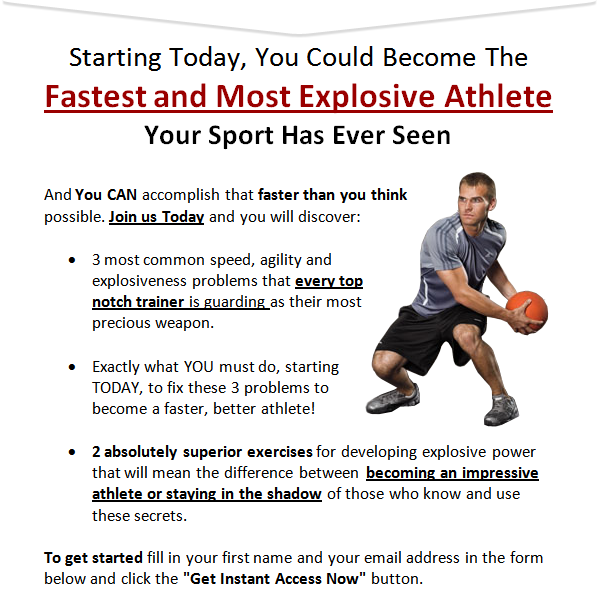Sports are random and chaotic by nature and thus require significant degrees of speed, agility and movement skills to meet the demands of the game. Multi-directional movements dominate sports like tennis, squash, cricket, baseball, soccer, rugby, boxing, mixed martial arts (MMA) and hockey. You will find that the most successful athletes are those that move the fastest and most freely. Training to improve your multi-directional movement skills is the key to reaching your potential as an athlete. If you are an athlete that wants to reach the top of your sport, then you’ve got to structure your training program around improving your ability to move in all directions and transition between movements through acceleration and deceleration qualities.
It is often thought that these multi-directional movement qualities are best learned and improved by simply playing sport. Unfortunately athletes form asymmetries as a result of favouring one side of their body. For example, a cricket or baseball player who throws right arm and bats right handed will develop asymmetrical movement compensations as a result of repeatedly hitting, throwing and performing rotational movements from their dominant side. This leads to poor movement skill so it is vital that athletes focus on training multi-directional movement patterns so they can a) improve their agility and b) reduce their risk of injury.
Here is a progression of multi-directional movements that can help:
• develop a strong base position with enhanced postural stability
• improve strength in lateral movements
• improve core strength and stability so as to be more effective in transferring the forces that are produced during changes in direction
• improve lateral movement skill
In order to possess great agility, an athlete must have optimal levels of stability, mobility, strength, power, elasticity, coordination and balance. The following multi-directional movement exercises will help improve all these physical attributes:
Athletic Base/Power Position
A solid base position is essential for a powerful first step and efficient acceleration. Every athlete is slightly different, but for most, having the feet slightly wider than shoulder width apart is optimal. The weight should be distributed on the balls of the feet, on the medial side of the foot (inside part) with the heels slightly elevated. You don’t want the heel off the ground, just less pressure on the heels.
The back should be straight with the chest out, shoulders back and the hips should be slightly elevated. From this strong base position, the athlete will be able to take a positive step in any direction without having to shift their centre of mass prior to movement or require a false step to initiate a positive first step.
Varied Resistance Pulls with a Partner
This exercise helps to reinforce good weight distribution, balance and stabilization of the ground reaction forces necessary for quick change of direction and effective lateral movement. To perform the exercise one athlete needs to get into a strong base position and create tension on the lower leg and core musculature by applying force to the ground through the medial part of their feet. The other athlete applies resistance in multiple directions by pulling a resistance band. After completing this exercise for about 30 seconds the partners change over.
Resisted Lateral Push Off to Base Position
This exercise will improve an athlete’s first step push off and the mechanics required for effective deceleration. It also enhances lateral speed and rotational force production which is critical in sport. Basically the more ground force an athlete can produce while maintaining balance and good posture, the further their first step takes them in a given amount of time, thus improving their speed and agility.
A resistance band or tubing is required to perform this drill. The athlete performing drill starts in their base position and makes a positive lateral step while fully extending their push leg to get as explosive a movement as possible. The athlete must ensure they do not pull the lead leg across to try and get further, but rather concentrate on pushing off as hard they can with the push leg. The athlete’s head should remain inside the hip, the hip inside the knee, and the knee should remain inside the ankle. Once good form is shown the progression is increasing the amount of steps to two, three and four steps.
Lateral Shuffle
This drill focuses on improving an athlete’s ability to decelerate, stabilize and then accelerate again. Core strength and stability is crucial as it is necessary for resisting the rotational forces that act on the body during rapid deceleration. In effect, the core muscles act as anti- rotators in deceleration so the stronger and more stable the core is, the faster the athlete will be able to change direction.
Set two cones up 5m apart and shuffle laterally until you reach the cone then shuffle back to the start position at the first cone. Make sure you start off in the strong athletic base position and on the turn or cut make sure that you maintain trunk stability and keep good alignment (i.e., the head must remain inside the hips, hips inside the knee, and knee inside the ankle). Any deviations from these positions in the cut or change of direction result in the athlete being inefficient in reducing force in the deceleration phase and also in producing force in the acceleration phase on the way out. Speed and agility is the name of the game so if you are the athlete make sure you have someone watching your form. If you don’t, then video tape it and review your sets. The quantity of work you do in this drill will depend on your level of strength, skill and the quality of movement that you can produce. As a rough guide start with doing 2-3 sets of 6 repetitions per side and increase the reps as you see fit.
Lateral Shuffle Hurdle Drill
The next progression of this movement is the lateral shuffle hurdle drill. This works to improve the athlete’s ability to effectively stabilize and control the body while moving fast between the two cones. To perform this drill start in the base position again and begin moving over the hurdles from one cone to the other and back again. Maintain good alignment while trying to get a strong arm action to promote a good leg drive up and over the hurdles. Starting outside the hurdles, in an athletic base position, begin shuffling through the hurdles keeping the feet apart and working to produce strong arm action. Cut on the outside hurdle and quickly change direction shuffling back over the hurdles. Shuffling over the hurdles should be accomplished by driving the knees and ankles up and over the hurdle. A common movement skill breakdown occurs when the athlete attempts to shuffle over the hurdles. As a progression to this drill a resistance band can be used. This changes things slightly in that resistance on the way causes the acceleration phase to be more difficult but also on the return the band is now at its strongest so controlling the deceleration phase becomes quite intense too. This variation is for the advanced athlete. Again keeping alignment and balance is crucial.
Crossover Run





